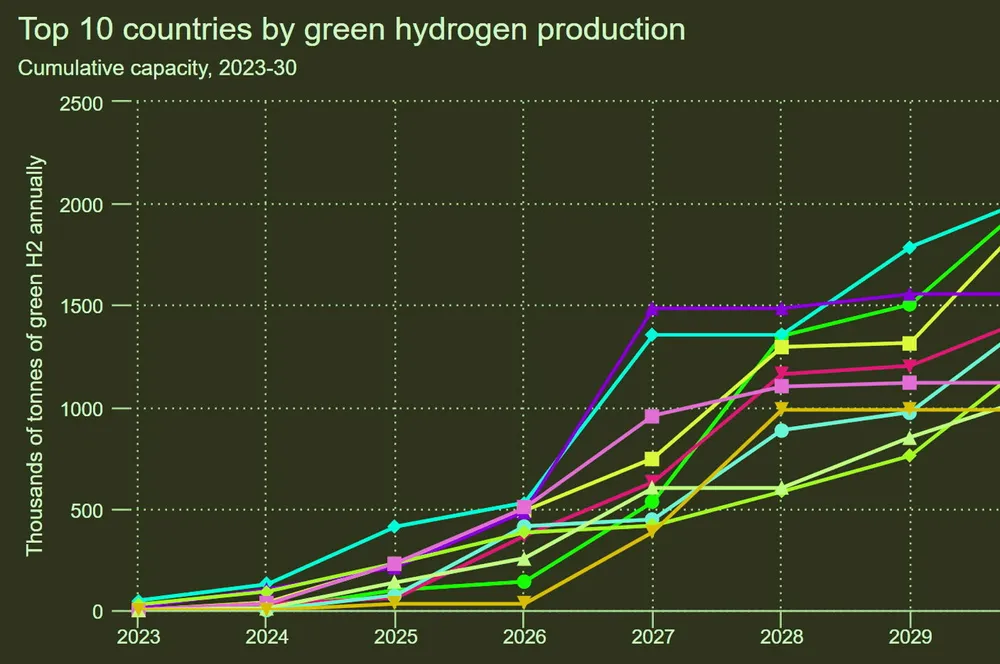EXCLUSIVE | Which ten countries will be the biggest producers of green hydrogen in 2030?
Australia, the US and Spain will take the lead, boosted by subsidies and mega-projects, according to data provided to Hydrogen Insight by Rystad Energy

Australia, the US and Spain will take the lead, boosted by subsidies and mega-projects, according to data provided to Hydrogen Insight by Rystad Energy
